2. Before proceeding with the procedure, prepare all the necessary tools and materials. Make sure you have enough clean rags and old newspapers on hand to catch spilled oil. Ideally, the engine should be preheated, as hot oil is more fluid and flushes out sludge better. When working under the vehicle, be careful not to touch the hot surfaces of the exhaust system components (in particular to the catalytic converter) and power unit.
3. To avoid scalding and to protect your hands from the carcinogenic effects of engine oil, try to work with rubber gloves.
4. To facilitate access to the components located under the bottom, the car should be raised above the ground and installed on reliable props, or driven onto a flyover or viewing hole. Regardless of the method chosen, make sure that the raised vehicle remains in a horizontal position, and if tilted, at an angle and in a direction that ensures unhindered oil flow through the oil pan drain hole.
5. Having given the fixing bolts, remove the lower crankcase protection plate. In addition to the bottom plate, there are also side guards that can be left in place, but extra care must be taken to avoid cutting yourself on their sharp edges.

6. Using a box or socket wrench, unscrew the oil pan drain plug a half turn. Place a suitable container under the drain hole, then finally unscrew the plug.
Note. Turning the drain plug by hand, always press it to the hole. When the thread is finished, remove the plug with a sharp movement, trying to get the oil jet into the prepared container, and not into your sleeve.
7. Let the oil flow out of the crankcase for some time, if necessary, move the drain container accordingly so that the weakening stream does not start to spill past.
8. After all the oil has been drained, wipe the drain plug, its sealing washer, and the sump surface around the drain hole with a clean rag. Check the condition of the sealing washer and replace if necessary. Screw the plug into place, tighten it with the required force.
9. Move the drain container under the oil filter located on the front of the cylinder block.
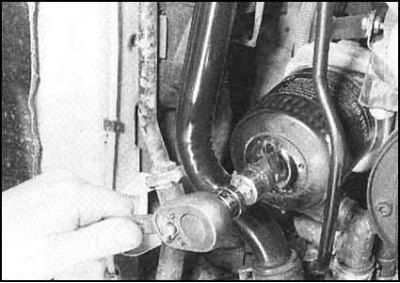
10. For the initial return of the oil filter, it is best to use a special puller, or a chain or tape wrench.
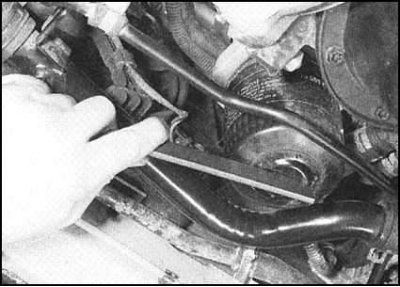
Note. A metal plate of suitable dimensions is perfect as a branded filter puller. The filter can then be turned out manually. Drain the oil from the filter into a drain container.
11. With a clean rag, wipe the surface of the cylinder block mating with the filter, completely removing traces of oil and sludge from it. After inspecting the removed filter, make sure that its sealing gasket does not remain stuck to the surface of the block. If necessary, carefully remove the gasket.
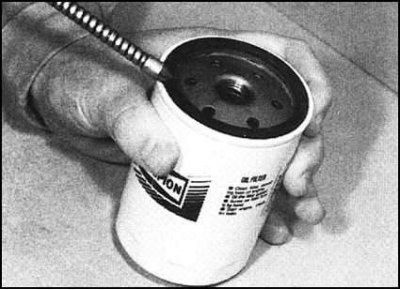
12. Lightly lubricate the O-ring of the new filter with clean engine oil, then screw the filter into place. Tighten the filter firmly by hand - never use any tool to avoid damaging the gasket.
13. Take out from under the car drain capacity and the tool. Install the crankcase guard (check fastener tightness) and lower the car to the ground.
14. Fill the engine with fresh engine oil of the required grade through the filler neck. To avoid spilling oil, it is best to use an equipped oiler or funnel. First, fill in half the nominal volume of oil and wait a few minutes, allowing the oil to drain into the engine sump. Continue to add oil in small portions until its level reaches the lower mark on the dipstick blade. To raise the level from the bottom mark on the dipstick to the top mark, about 1.0 more liters of oil will be required.
15. Start the engine and let it run for a few minutes, then inspect the oil filter and oil pan drain plug for signs of leakage. Be aware that the first time the engine is started after an oil change, the oil pressure warning light will go out after a delay of a few seconds to fill the engine's oil galleries and a new oil filter.
16. Stop the engine, wait a few minutes for the oil to drain into the sump, then check the level again. Make appropriate adjustments if necessary.
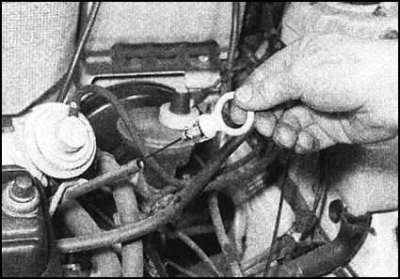 | 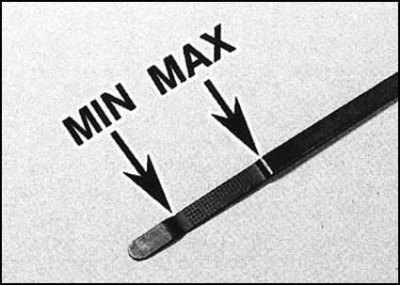 |
17. Drained engine oil must be disposed of in the prescribed manner.
Note. It is indecent and illegal to drain used oil into the sewer - you should take it to special collection points - consult a service station.
